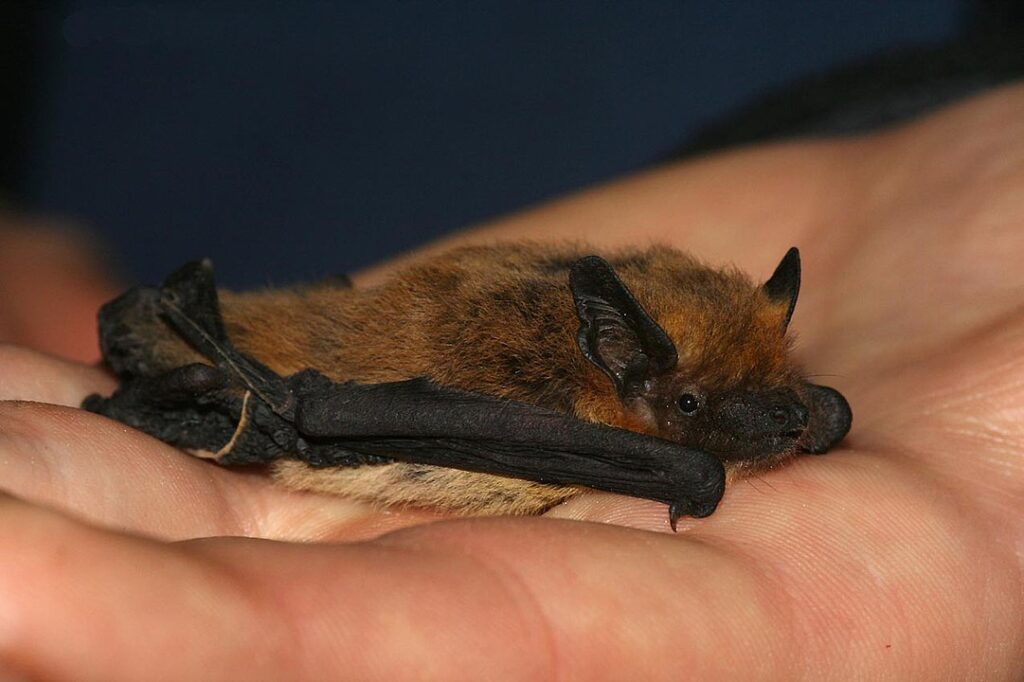
Most bats use echolocation to orient themselves in space. This means that they produce high-frequency sounds and can judge the distance of obstacles that reflected the sound based on the return time of the echo. However, to judge the distance based on the time the echo returns, one needs to know the speed of sound. The problem is that the speed of sound is not constant: it can vary in nature by more than 5% depending on temperature, humidity or altitude*.
What would be your guess: are bats born with the innate knowledge of the speed of sound and therefore distance judgment, or do they need to learn this?
Since the speed of sound is not constant, scientists predicted that knowledge about it is not innate in bats, but rather gained through experience. However, research on Kuhl’s pipistrelle bats (Pipistrellus kuhlii) has shown that the opposite is true.
These bats occur mainly in the Mediterranean region and in the West Asia. In their natural environment, they experience a wide range of temperatures and thus conditions with different speeds of sound.
To assess the effect of the speed of sound on bats’ echolocation and behavior, scientists conducted experiments in normal air and helium-enriched atmospheres – with a higher speed of sound and therefore a faster echo return time**. Young bats that were reared from birth in different conditions were compared to each other as well as to adult bats that had grown up in normal air.
It turned out that in the atmosphere with helium, bats, regardless of their age or rearing environment, assessed the distance to a target (feeding platform) as being closer than it actually was. Their echolocation pattern was the same as for closer objects in normal air. Additionally, in helium atmosphere, bats often slowed down and prepared for landing too early, thus landing ahead of their intended target. Even after several days in the helium atmosphere, the bats did not change their behavior and missed their target as often as at the beginning of the experiment.
This indicates that the speed of sound is encoded in the bats’ brains from birth, and the world seems to be perceived in terms of time rather than distance.
But how do bats deal with changes in the speed of sound in the wild? Firstly, these changes are usually smaller than those encountered in experiments. Secondly, as the bat approaches the prey or obstacle, the absolute error in distance judgement decreases. The error is a fraction of the distance – for example, if the speed of sound is increased by 10%, the object that is 100cm away seems to be 90cm away – error of 10 cm. But if the object is 10cm away the error is only 1cm. Lastly, bats usually don’t catch prey with their mouths, but entrap it with their wings and tail membrane, so they don’t have to be very precise. Although, even in the wild bats may miss their target.
While animals have amazing abilities to learn and adapt to their environment, in this case they seem to rely on innate skills even if they are not perfect in all conditions.
* For example, in standard air at 0°C, sound travels at about 332 m/s and at 30°C it travels at 350 m/s. So, the echo returns faster at higher temperatures.
** The experimental conditions increased the speed of sound by 10%, 15% or 27% – depending on the amount of helium.
Photo: Leonardoancillotto86 – Italy, CC BY 3.0, https://commons.wikimedia.org/w/index.php?curid=15410420
